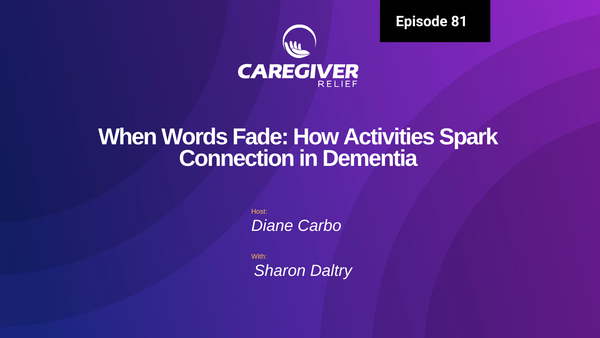What is Palliative Care vs Hospice?

Introduction
When it comes to end-of-life care, most people are familiar with the terms palliative care and hospice. But do you know what each of these types of care actually involve? In this guide, we’ll explore the differences between palliative care and hospice so you can make an informed decision about which type of care may best suit your needs.
Let's start with the basics:
Palliative care is a type of medical care that focuses on providing relief from pain and other symptoms associated with a serious illness as well as providing psychological and emotional support for the patient and their family. It is provided by a team of doctors, nurses, and other medical professionals. Palliative care can be used alone or in combination with other forms of treatment.
Hospice, on the other hand, is a type of care that is specifically aimed at improving the quality of life for those with a terminal illness. hospice care typically involves a multidisciplinary team of healthcare providers who focus on providing comfort and support for the patient. Unlike palliative care, hospice care does not focus on treating the underlying illness.
Definition of Palliative Care
Palliative care is healthcare that focuses on relieving the physical, emotional, and spiritual suffering of people living with a serious illness.
It is specialized medical care that can be provided at any stage of an illness, from diagnosis onward. Palliative care can be provided in addition to treatments that are meant to cure. It is provided by a team of doctors, nurses, and other specialists who work with the patient’s family to provide a full range of care and support.
The goals of palliative care are to improve quality of life by managing pain and other symptoms, providing psychosocial and spiritual support, and helping to make informed decisions about medical treatment.
Definition of Hospice
Hospice is a type of care for people with a life-limiting illness. It provides support and comfort, rather than a cure, to help people live as well as possible until the end of their lives. Hospice typically includes a team of health care professionals and volunteers that provide care in the patient's home, or in a hospice facility. The team may include doctors, nurses, social workers, counsellors, and other professionals.
The primary goal of hospice care is to improve quality of life for both the patient and their family. This includes controlling pain and symptoms, as well as providing emotional and spiritual support. Hospice care is also focused on helping the family cope with the illness and prepare for the loss of their loved one. There are no time limits on hospice care, and services can be provided for weeks, months, or even years.
Overview of Palliative Care
Palliative care is specialized medical care for people living with a serious illness. It focuses on providing relief from the symptoms and stress of a serious illness. Its goal is to improve quality of life for both the patient and their family. Palliative care is provided by a team of doctors, nurses and other specialists who work together with a patient’s other doctors to provide an extra layer of support.
The aim of palliative care is to help people living with a serious illness. Palliative care providers have expertise in giving incurable patients relief from pain, shortness of breath, fatigue, constipation, nausea, loss of appetite, difficulty sleeping and dealing with difficult emotions. Most importantly, palliative care is tailored to the needs of each patient.
Types of services offered by palliative care providers include physical, psychological, spiritual and social support. Palliative care providers also help coordinate necessary services, such as arranging home hospice care or helping patients with important decisions about their care.
Palliative care is available in many settings, including hospitals, nursing homes, home health agencies, hospices and outpatient clinics. In some cases, patients can choose to have their palliative care provider come to their own home.
Palliative care is usually provided by a team of doctors, nurses and other specialists. These may include a palliative care physician, nurse practitioner, registered nurse, social worker, dietitian, chaplain and occupational therapist.
A. Aim of Palliative Care
Palliative care is a type of medical care provided to people with a life-limiting or terminal illness. Its aim is to improve the quality of life for those living with the condition, their carers and families by relieving pain, managing symptoms and providing emotional and spiritual support.
The goal of palliative care is to provide relief from the symptoms and stresses of the disease or illness. It can also provide support for families and carers as they adjust to the changing needs of their loved one. Palliative care aims to improve the quality of life and to ensure that each moment is meaningful and comfortable.
Types of Services Offered
The types of services available with palliative care and hospice are numerous and vary depending on the individual patient’s needs. The common goal of both is to provide comprehensive comfort care that will improve a patient’s quality of life.
Palliative care services may include:
- Pain management
- Symptom management and control
- Emotional and spiritual support for the patient and family
- Patient and family education
- Care coordination with other specialists
- Help with advance care planning
Hospice services may include:
- Home health visits
- Nursing care
- Physician services
- Counseling
- Medications
- Equipment
- Short-term respite care
- Nutrition and dietary counseling
Who Offers Palliative Care?
Palliative care is provided by a specialized team of healthcare professionals. They include physicians, nurses, social workers, counselors, and other trained caregivers. Each healthcare professional works with a patient and their family to manage the physical, emotional, and spiritual aspects of end-of-life care. Most often, the palliative care team works in conjunction with the patient’s regular physician to coordinate care.
The palliative care team may provide services in a variety of settings, including hospitals, hospices, nursing homes, and people’s homes. Some palliative care teams also offer telehealth services, which allow them to provide care remotely via phone or video chat. This can be particularly helpful if a patient is unable or unwilling to travel.
Overview of Hospice
Hospice is a special type of care for people in the last stages of their lives. The goal of hospice is to provide comfort and support to those who are facing life-limiting illnesses or have a terminal illness. Hospice recognizes death as a part of life and focuses on providing physical, emotional, and spiritual care to those approaching the end of life.
When people are receiving hospice care, they are no longer receiving curative treatment for their illness. The focus of care shifts to managing symptoms and providing pain relief. Hospice is not just about providing medical care, it is also about addressing the social, psychological, and spiritual needs of patients. It is about creating a safe and comfortable environment for the patient to live out their last days surrounded by people who care about them.
Hospice services are usually provided in a patient’s home, but can also be provided in nursing homes or in inpatient hospice facilities. The types of services vary, but typically include:
- Pain management
- Symptom control
- Medical equipment and supplies
- Meal preparation
- Emotional and spiritual support
- Bereavement counseling
- Respite care for caregivers
Hospice organizations typically consist of a team of professionals including doctors, nurses, social workers, counselors, chaplains, therapists, volunteers, and caregivers. These specialists collaborate to provide comprehensive, compassionate care tailored to the individual's needs.
Aim of Hospice
Hospice care is designed to provide comfort and support to individuals and their families during the end-of-life journey. The overall goal of hospice is to manage and relieve pain and other symptoms related to terminal illness, while providing emotional and spiritual support to both the patient and their family. Hospice services also includes bereavement counseling for family members. Hospice care aims to help patients reach a peaceful and dignified death.
Who Provides Inpatient Hospice?
Inpatient hospice care is provided by a team of medical professionals and paraprofessionals, including doctors, nurses, social workers, chaplains, home health aides, and volunteers. This team works together to provide holistic care for patients and their families.
The team works with the patient and family to create an individualized plan of care that meets the physical, emotional, social, and spiritual needs of the patient. This plan may include any combination of medical services, such as pain management, emotional support, spiritual counseling, or other supportive services.
The team is available 24/7 and can provide care in the patient’s home or at a hospice facility. Some hospice facilities also offer inpatient services, such as respite care, when the patient needs more intensive medical care than can be provided at home.
Differences Between Palliative Care and Hospice
When faced with a life-limiting illness, both palliative care and hospice can provide important support and relief to patients and their families. However, the two types of care have distinct differences.
Palliative care aims to relieve suffering and improve quality of life for people living with serious illnesses, while hospice care focuses on providing comfort and support during a terminal illness.
Let's look at the clinical care differences, location differences, and timing of care in more detail.
- Clinical Care Differences: Palliative care is provided along with curative treatment, and addresses the physical, spiritual, and emotional needs of the patient. In contrast, hospice is only recommended when curative treatments are no longer beneficial.
- Location Differences: Palliative care can be provided in a variety of locations, including at home, hospitals, nursing homes, and outpatient clinics. Hospice care is typically provided in the patient's home or a freestanding hospice facility.
- Timing of Care: Palliative care services are typically offered as soon as the patient is diagnosed with a serious illness; hospice is usually recommended when a patient is in the last six months of life.
Clinical Care Differences
Palliative care and hospice are both types of support that medical teams provide to people who are living with a serious or terminal illness. Although they have some similarities, they have distinct differences. One of the main differences is the type of care each offers.
Palliative care is provided along with a person’s primary treatment plan. This means it is often given alongside curative treatments such as radiation or chemotherapy, in order to help manage symptoms and improve quality of life. Palliative care seeks to empower the patient and family through education, strong communication, and symptom management. The team includes doctors, nurses, social workers, counselors, and volunteers.
Hospice care is offered when a person has reached a point in their illness where they no longer wish to seek aggressive treatments to extend their life. Hospice focuses on comfort care and symptom relief and is provided in the home or a hospice center. Their goal is to make sure the patient feels comfortable and does not experience pain. The team focuses on providing emotional support for the patient and their family members. The team includes doctors, nurses, chaplains, social workers, bereavement counselors, and volunteers.
Location Differences
Palliative care typically is provided in a hospital, outpatient clinic, nursing home, or other institutional setting. On the other hand, hospice services are generally provided in the patient’s home, but they may also be provided in an institution such as a hospice inpatient unit, a hospital, or a nursing home.
The location of where palliative care and hospice services are provided can make a big difference in a patient’s experience. For example, if the goal of care is to manage symptoms and improve quality of life, palliative care in a clinical setting may be the best option. On the other hand, if the patient’s goal is to die at home, then hospice care may be the best option.
Timing of Care
When considering palliative care and hospice, there are differences in the timing of care. Palliative care is often offered at the same time as other treatments. It works with the treatments the patient is already receiving to ease pain and increase comfort. This type of care can be offered at any stage of an illness, from diagnosis and throughout the duration of the illness.
Hospice care is provided when a patient’s life expectancy is six months or less. This type of care focuses on symptom management and comfort rather than treating the illness itself. Hospice emphasizes quality of life for patients in their last stages of life.
Costs and Insurance Coverage
When considering palliative care or hospice, an important factor to consider is cost and insurance coverage. The cost of each depends on a range of factors, such as the type of services provided and the location in which care is received. Medicare covers both palliative care and hospice for those who qualify, but there are some differences between the two in terms of reimbursement rates and eligibility.
Comparison of Costs
The cost of palliative care and hospice care varies depending on the services provided. Generally, palliative care costs are covered by health insurance and are paid out-of-pocket, while the cost of hospice services may be covered by Medicare, Medicaid, or private insurance. Medicare covers 80% of the cost of hospice care while Medicaid covers 100% in some cases.
Medicare Coverage for Hospice
Hospice is covered by Medicare Part A and most private insurance plans. When opting for hospice care, you will get coverage for physician services, nursing care, medical equipment, drugs and supplies related to terminal illness, emotional and spiritual support, and bereavement counseling. The amount of coverage and the types of services provided vary depending on your plan.
Hospice care is usually provided in the patient’s home or a residential hospice center. For patients under hospice care, there is a cap on how much Medicare will pay for their care each year. There may also be copayments or coinsurance associated with hospice care, so it’s important to speak with your provider about coverage before making a decision.
When you or a loved one is facing a diagnosis that is life-limiting, it can be difficult to know what kind of care is the best option. There are two types of end-of-life care services available: palliative care and hospice care. Making a decision between the two can be difficult and emotional. When researching each option, there are several factors to consider in order to make an informed decision.
Palliative care and hospice both aim to provide comfort for those living with terminal illnesses. However, the scope of services provided, location of care, and timing of intervention differ between the two. In addition, insurance coverage and costs for each type of care also differ. It is important to take all of these factors into account when weighing the options.
Knowing the differences between palliative care and hospice can help you make a decision about which type of care is best for you or your loved one. Palliative care typically focuses on symptom relief, while hospice offers more holistic comfort. Palliative care may begin earlier in the course of a terminal illness and usually takes place in hospitals or other facilities. Hospice care often begins once a patient has stopped seeking curative treatments and is expected to have six months or less to live. This type of care typically takes place in the patient's home or a hospice facility.
Another factor to consider is the cost of each option. While palliative care can be expensive, especially when not covered by insurance, hospice is typically considered an affordable choice for patients and their families. Medicare will cover most of the costs for both types of care. Understanding the differences in coverage can help you choose the type of care that best fits your budget and needs.
Ultimately, deciding between palliative care and hospice is a personal one and should take into account the individual’s medical needs as well as their wishes. It is important to discuss all of your options before making a decision, and you may want to reach out to organizations to get more information.
Making a Decision
When it comes to making a decision on palliative care and hospice, there are several factors to consider. It is important to understand that both of these services offer different types of care and will provide different benefits depending on an individual’s specific needs. It is also important to be aware of the costs associated with each type of service so that one can make an informed decision.
When considering palliative care and hospice, some of the factors to consider include:
- The individual’s medical history and diagnosis
- The individual’s current and anticipated medical needs
- The availability of care at home or in a facility
- The preference of the individual and their family
- The cost associated with each type of care
Benefits of Both Palliative Care and Hospice
Regardless of whether you choose palliative care or hospice, both have benefits that can help improve the quality of life of terminally ill patients and their families. Palliative care and hospice can provide relief from physical symptoms like pain, nausea, difficulty breathing and depression, as well as emotional support for the patient and their loved ones.
Palliative care helps to improve the overall quality of life for patients with serious illnesses. It is designed to bring comfort and pain relief through the use of medications, therapies, and other means. It also offers emotional and spiritual support to the patient and their family members.
Hospice offers comprehensive care for terminally ill patients and focuses on providing compassionate support for the patient and their loved ones. Hospice can provide pain relief through medications, therapies, and other means. In addition, hospice workers often provide emotional counseling, spiritual counseling, and social support for the patient and their family members.
Both palliative care and hospice are focused on helping patients and their families cope with a terminal illness. The goal is to make the patient's remaining time as comfortable as possible by addressing physical, emotional, and spiritual needs.
Additional Resources
When it comes to understanding palliative care and hospice, you don’t have to go it alone. There are organizations, government resources, and directories available to help you find the right information and care for your needs.
Organizations offering support and information: There are a variety of organizations out there dedicated specifically to providing information and support to those facing terminal illnesses and their families. Some of these include the National Hospice and Palliative Care Organization (NHPCO), The Center to Advance Palliative Care (CAPC), and Compassion and Choices. These organizations provide resources, information, and support to those in need of palliative or hospice care.
Government resources: The Department of Health and Human Services has several resources dedicated to hospice and palliative care, including Medicare and Medicaid. Additionally, each state has their own list of resources available to those in need of care. Contact your local health department for more information.
Directories for finding providers: The NHPCO offers a directory of hospice programs and palliative care providers. This is a great resource for finding the right care for you or your loved one. Additionally, some areas have an online directory that provides information on local providers.
Organizations Offering Support and Information
When considering palliative care or hospice for yourself or a loved one, it’s important to have access to up-to-date and accurate information. There are many organizations that specialize in palliative care and hospice services that offer support and resources for families.
Some of the most prominent organizations devoted to palliative care and hospice include the National Hospice and Palliative Care Organization (NHPCO), the Center to Advance Palliative Care (CAPC), and the American Academy of Hospice and Palliative Medicine (AAHPM). These organizations provide valuable resources such as fact sheets, clinical guidelines, webinars, and support for patients and their loved ones.
In addition to these organizations, there are several other organizations that specialize in providing information on palliative care and hospice services. The Coalition to Transform Advanced Care (C-TAC) provides resources and support to both patients and health care providers. They facilitate collaboration among organizations with expertise in advanced care and they advocate for improved access to high-quality palliative and hospice care.
The Center for Practical Bioethics is an independent, non-profit organization dedicated to resolving ethical issues related to health care. They offer educational programs, decision-making tools, and policy resources to address palliative care and hospice care in a variety of settings.
Finally, the Conversation Project is a national campaign dedicated to helping people talk about their wishes for end-of-life care. Their website provides resources and other materials to help families have difficult conversations about end-of-life decisions.
Government Resources
If you’re looking for information related to palliative care and hospice, the government can provide a wealth of resources. The Centers for Medicare & Medicaid Services (CMS) offers a range of resources to help you navigate the ins and outs of palliative care and hospice care, including:
- Information on what services are covered by Medicare
- Guidance on who is eligible for coverage
- Educational materials about palliative care and hospice
The National Institute of Nursing Research (NINR), part of the National Institutes of Health, has a number of resources that provide information about palliative care and hospice, including research findings, factsheets, and a guide for caregivers.
The U.S. Department of Veterans Affairs (VA) also provides resources for veterans and their families who are facing serious illness. The VA offers a range of services and benefits, including home-based primary care, a national network of community-based outpatient clinics, long-term care, and hospice benefits.
Directories for Finding Providers
If you need help finding a provider for palliative care or hospice, there are several directories that can help. These directories list providers in your area, and can give you more information about the services they offer.
One of the best ways to find a provider is to search on the National Hospice and Palliative Care Organization (NHPCO) website. They have a directory of accredited hospices and other resources in all 50 US states. You can also find a list of accredited home health agencies through Medicare.
You can also find a list of palliative care specialists on the American Board of Internal Medicine (ABIM) website. The ABIM website also has contact information for specialists in each state.
The National Palliative Care Association (NPCA) website also provides a list of certified palliative care providers. The American Association of Hospice and Palliative Medicine (AAHPM) website offers a directory of its members, which includes physicians, nurse practitioners, and other health care professionals.
It is important to remember that not all providers listed in these directories are the same. Make sure to read reviews and research each provider carefully to ensure you choose the best option for your needs.
Conclusion
When considering palliative care and hospice, it’s important to evaluate the differences between the two. Palliative care focuses on relieving the physical, emotional, and spiritual symptoms of serious illnesses in any stage, while hospice care is typically provided in end-of-life situations. In terms of costs and insurance coverage, palliative care may be more expensive than hospice care, depending on your particular plan. When making a decision about which type of care is best for you or your loved one, you should consider the pros and cons of each and make an informed decision.
FAQs about Palliative Care and Hospice
Palliative care and hospice are two important topics to understand when it comes to end-of-life care. To help you better understand the differences between them, listed below are some of the most frequently asked questions:
- What is palliative care?
Palliative care is care that is focused on easing the symptoms of a serious illness, improving quality of life, and providing emotional and spiritual support to both the patient and their family. It is provided by a team of medical professionals, including doctors, nurses, social workers, and others, to help patients and their families during a difficult time. - What is hospice?
Hospice is a type of end-of-life care that focuses on providing physical, emotional, and spiritual support to both the patient and family members. It can be provided in a variety of settings, including at home, in nursing homes, or in hospitals. Hospice services are often provided by a team of healthcare professionals who specialize in palliative care. - What are the main differences between palliative care and hospice?
The main differences between palliative care and hospice are the type of care they provide, where care is provided, and when care is available. Palliative care can be provided at any stage of a serious illness and is focused on relieving symptoms and improving quality of life. Hospice care is generally used for end-of-life care and is focused on providing comfort and support in the last days or weeks of a patient's life. Palliative care can be provided in hospitals, while hospice care is usually provided in a home setting or other place of residence. - Are palliative care and hospice services covered by insurance?
Yes. Medicare and most private health insurance plans cover palliative care and hospice services. Medicare covers palliative care when it is provided in an inpatient or outpatient setting. Medicare also covers hospice care for those who are eligible. - How do I decide if palliative care or hospice is right for me or a loved one?
When deciding between palliative care and hospice, it's important to consider the needs and wishes of both the patient and their family. Talk to your doctor about your options and what they recommend. Depending on the situation, a combination of both palliative care and hospice may be appropriate.
Glossary
Palliative care and hospice care can be complex topics, so we've created this glossary to help explain some of the common terms related to these services.
- Palliative Care: Palliative care is a form of medical treatment for people suffering from serious illnesses. It is focused on providing relief from the symptoms, pain, and stress of a serious illness—whatever the diagnosis—and improving quality of life for both the patient and their family. It can be used alongside curative treatments.
- Hospice Care: Hospice care is a specialized form of palliative care for people who are approaching the end of life. It focuses on providing comfort and support to those in the last months of life and gives them the opportunity to live out their lives with dignity. Hospice care is available in both inpatient and outpatient settings.
- Inpatient Hospice: Inpatient hospice care is provided in a hospice facility such as a hospital or nursing home. Here, patients get round-the-clock medical care and emotional and spiritual support.
- Outpatient Hospice: Outpatient hospice care is provided in the comfort of a patient’s home. A team of specially-trained doctors, nurses, family members, and volunteers will visit the patient and provide care according to the individual’s needs.
- Cure: Cure is a term used to refer to treatments that have the potential to completely eliminate an illness or disease. For some conditions, cure may not be possible, but palliative care can still offer relief from the symptoms.
- Bereavement Services: Bereavement services are support services provided to family members after a loved one passes away. These services often include counseling and other resources to help the family cope with the loss.
Glossary
Palliative care and hospice are both medical terms that help individuals and families manage serious illnesses. To have a better understanding of these two support services, here are common terms associated with palliative care and hospice:
- Palliative Care: Palliative care is specialized medical care focused on providing relief from the symptoms, pain, and stress of a serious illness. It is provided by an interdisciplinary team of doctors, nurses, social workers, counselors, and other professionals.
- Hospice Care: Hospice care is provided to people with a life-limiting illness who have chosen to forego aggressive treatments. This type of care is centered around providing comfort and support for the patient and family as the illness progresses.
- Advance Care Directive: An Advance Care Directive is a document that states a person’s preferences for their medical care in the event they become incapacitated due to a serious illness or injury. It typically includes a health care proxy, instructions about desired treatments, and other wishes.
You might also like this article:








